From the exhilarating moment when your beagle first masters the ‘sit' command amidst a flurry of wagging tails to the advanced techniques that turn your adventurous pup into a focused, obedient companion, our beagle obedience training guide is your map to an extraordinary beagle transformation that will not only teach your beagle to heed your every word, but will also strengthen the bond between you as you conquer each training milestone together. Let's dive in…
Key Takeaways
- Establishing a solid foundation in basic commands such as ‘sit,’ ‘stay,’ and ‘come’ is vital for a beagle’s obedience training and should start as early as 7 to 8 weeks of age, using positive reinforcement to make the process enjoyable.
- Crate training is essential for providing a beagle with a secure space and aids in various aspects including potty training and creating a daily routine, with the right size crate and positive associations being crucial for success.
- Socialization and advanced training are key in integrating beagles into the family and keeping their minds engaged, involving exposure to different environments, mastering leash manners, and addressing distractions and excessive barking.
Find out how to train your beagle to be the well-behaved pup you desire – Read Free Report
The Cornerstone of Beagle Obedience: Starting with the Basics
Beagle puppies are little bundles of energy with noses that guide them on many adventures, often regardless of your calls and commands. This can make beagle obedience training seem like a daunting task. However, don’t be deterred by their independent nature; initiating early with basic commands and forming a consistent daily routine can be incredibly beneficial in your beagle puppy home. The key is to begin training around 7 to 8 weeks old, so that by the time your beagle puppy celebrates their first birthday, they’re well-versed in the doggy decorum that makes them a joy to be around.
It’s a well-known fact among beagle owners that these energetic dogs, despite their high energy and strong hunting instincts, can learn to listen and obey just as well as any other breed.
The Sit Command
Imagine the pride you'll feel when your beagle puppy sits calmly amidst the chaos of a family gathering or a busy park. Mastering this behavior begins with the sit command, a cornerstone of dog training. Employing positive reinforcement is essential as it ensures that learning remains an enjoyable and stress-free experience for your pup. Start by enticing your beagle with treats and offering abundant praise, turning each training session into a rewarding experience.
As your beagle becomes more adept at sitting on cue, you can gradually reduce the frequency of treat rewards. This strategy reinforces their training and fosters obedience, encouraging them to follow commands even without the immediate prospect of a treat.
Mastering the Stay Cue
Teaching your beagle the stay cue is akin to asking them to pause the movie of life momentarily—an invaluable skill for those moments when you need them to wait patiently. Begin this training in a quiet environment with minimal distractions to establish a solid foundation for the behavior. As your beagle starts to grasp and obey the stay cue, gradually introduce new distractions to challenge them in a controlled way.
Remember to consistently reward your beagle with their favorite treats and toys each time they successfully follow the stay command. This approach ensures that the behavior is positively reinforced, making it a reliable part of their skill set. With continued practice, your beagle will learn to stay put dependably, which is crucial for both their safety and your peace of mind.
Perfecting the Come Call
A beagle's keen sense of smell can often lead them on unexpected journeys, making the “come” command an indispensable part of your training repertoire. A treat pouch filled with delicious goodies can be a powerful tool in recall training, helping to ensure that your beagle’s attention quickly returns to you when called.
Using the allure of tasty treats as motivation can effectively interrupt their scent-driven explorations and encourage them to return to your side. This training approach not only strengthens their obedience but also enhances their safety during off-leash activities.
Crate Training Mastery for Your Beagle
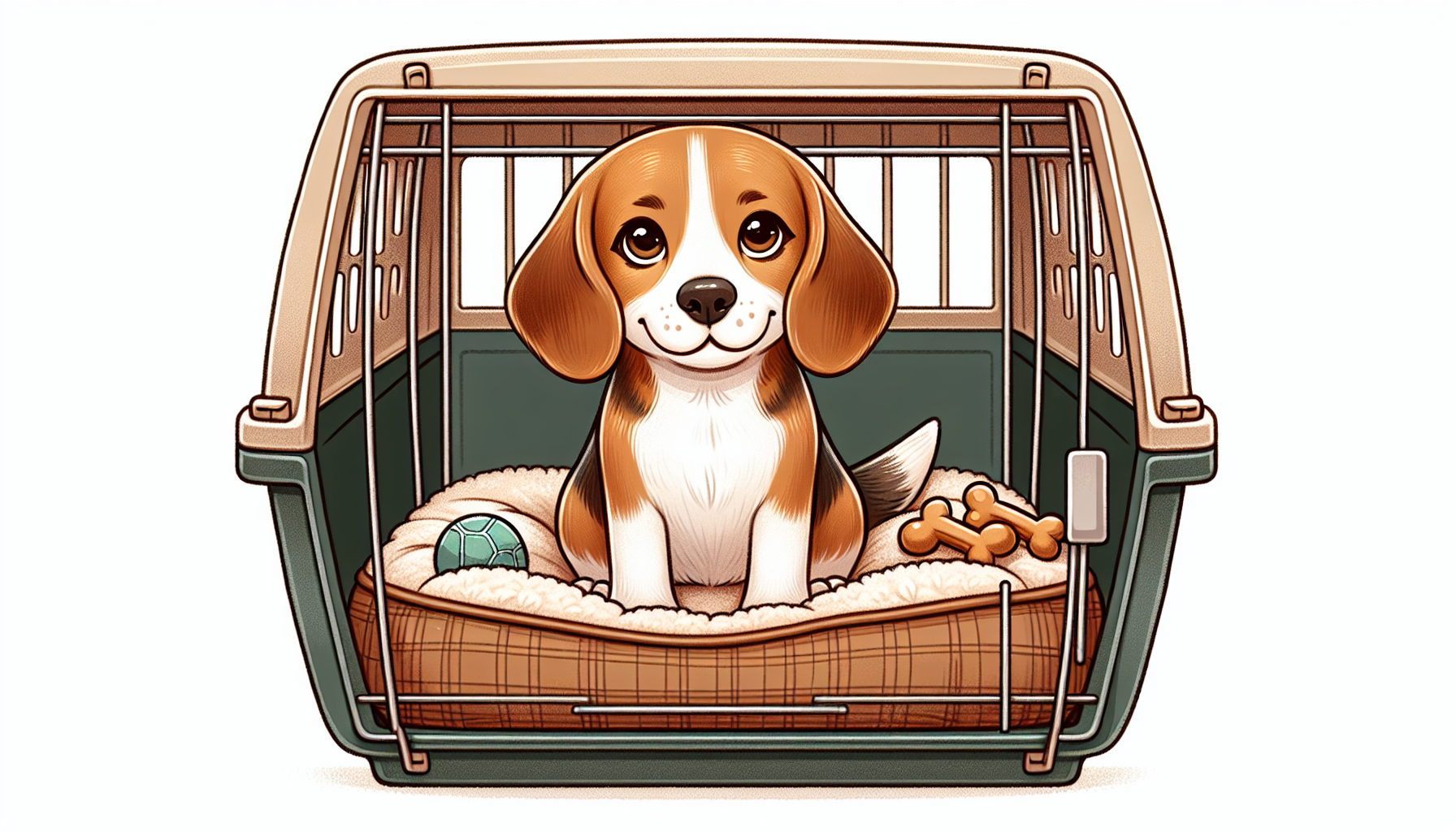
Image created using AI
As we move beyond the basics, crate training emerges as a crucial technique. It offers your beagle a secure and personal sanctuary, which is beneficial for everything from potty training to providing a retreat when the world seems overwhelming. A crate fulfills a beagle’s instinctual need for a den-like space, offering security and safety that can make them feel more at ease. It’s more than just a cozy spot for naps; it becomes a vital part of their daily routine, helping ensure that everyone can sleep through the night without the hassle of surprise puddles or chewed-up shoes.
Veterinary experts, trainers, and breeders all highlight the multiple benefits of selecting an appropriate crate for your beagle. They emphasize how it plays a pivotal role in providing a secure environment and can be invaluable in emergency situations.
Selecting the Right Crate
Choosing the appropriate crate size is crucial for your beagle's comfort and safety. The crate should offer enough room for your beagle to stand up, turn around, and lie down comfortably, yet it shouldn't be so large that they're tempted to use one end as a bathroom. To find the right size, measure your beagle’s height, length, and width. Use these measurements to consult a crate size chart to help guide your choice.
Typically, a medium crate measuring about 30–36 inches in length will suit most beagles. However, keep in mind that each dog is unique, so these dimensions might vary slightly depending on your particular pet.
Positive Association with the Crate
Creating a positive association with the crate is essential for your beagle to view it as a secure and comforting space. Using high-value treats is an effective way to build this connection through positive reinforcement. Encourage your beagle to enter and stay in the crate willingly by associating it with good things, such as receiving tasty treats or discovering their favorite toy inside.
By consistently applying positive reinforcement techniques, you can help your beagle develop and maintain a favorable view of their crate. This approach will transform the crate into a comfortable retreat where they feel safe and happy.
Crate Training Schedule
Establishing a routine with the crate is crucial for guiding your beagle toward a successful adjustment. Start with brief periods inside the crate to allow your beagle to gradually get used to the new environment. As they grow more comfortable, you can slowly extend these periods. This helps them understand that time in the crate is a normal and predictable part of their daily routine.
Maintaining consistency is essential, as it helps reassure your beagle and strengthens their trust in the crate as a positive element of their life. This consistent approach ensures that the crate becomes a reliable and secure space for your beagle.
Potty Training Success for Beagles
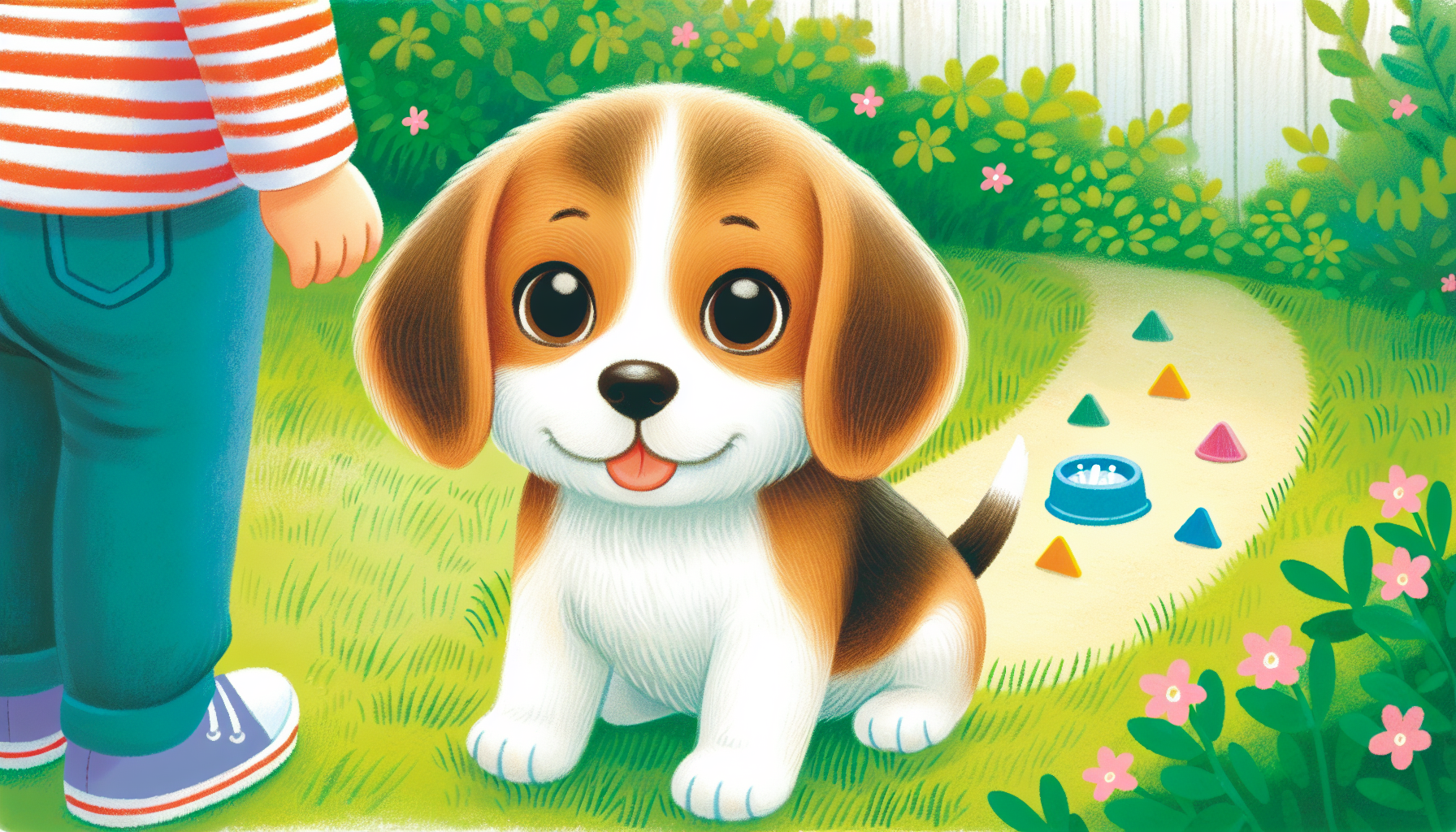
Image created using AI
Potty training is an essential part of raising a well-behaved pet, and for beagle puppies, the keys to success are consistency, attention, and patience. Using a crate taps into a beagle’s instinct to keep their sleeping area clean, which is vital for mastering bladder control. Adding puppy pads to the mix can make it easier to keep the area clean, especially in the early stages of training.
For the best results, establish a consistent routine that includes:
- Frequent Outdoor Breaks: Regular trips outside help your puppy learn to only go potty outdoors.
- Manage Diet and Water Intake: Controlling what and when your puppy eats and drinks, particularly before bedtime, can prevent accidents.
- Positive Reinforcement: Always praise or reward your puppy when they successfully use the bathroom outside, reinforcing good behavior.
By closely monitoring your beagle's behavior and maintaining a patient, consistent approach, you'll set the stage for effective potty training.
Recognizing Potty Signals
A critical component of successful potty training is your ability to recognize your beagle's signals indicating they need to go outside. Common cues include:
- Sniffing around
- Circling a specific area
- Whining
- Scratching at the door
Missing these signals can often lead to accidents indoors, as beagles might not wait until you recognize their urgency.
Since every beagle has its own set of behaviors, it's crucial for you as the owner to quickly identify and respond to these cues. Being proactive and attentive, even when the signals are subtle, is key to effective potty training.
Establishing a Potty Routine
To successfully potty train your beagle, establish a consistent daily routine with timed outings first thing in the morning, after meals, and last thing at night, as well as regularly throughout the day. Designate a specific bathroom spot and use a consistent command like ‘go potty' to reinforce training. Setting reminders for outings and avoiding food and water before bedtime can help prevent overnight accidents, making the training process smoother.
Handling Accidents the Right Way
Accidents are a common part of the early stages of potty training, and your response to them is crucial. Here are effective ways to handle them:
- Avoid Punishment: Reacting negatively to accidents can create stress for your beagle and may lead them to hide when they need to go. Instead, maintain a calm demeanor.
- Use Enzyme Cleaners: To effectively remove odors that could encourage your beagle to revisit the same spot, clean up accidents with an enzyme-based cleaner. This type of cleaner breaks down the waste instead of just masking the smell.
- Steer Clear of Ammonia-Based Cleaners: Avoid using cleaners that contain ammonia, as they can resemble the smell of urine, potentially confusing your beagle.
- Reinforce Good Behavior: Always reward your beagle with treats promptly after they successfully go potty outside. This positive reinforcement helps them understand the desired behavior.
Socialization Skills: Integrating Your Beagle into the Family
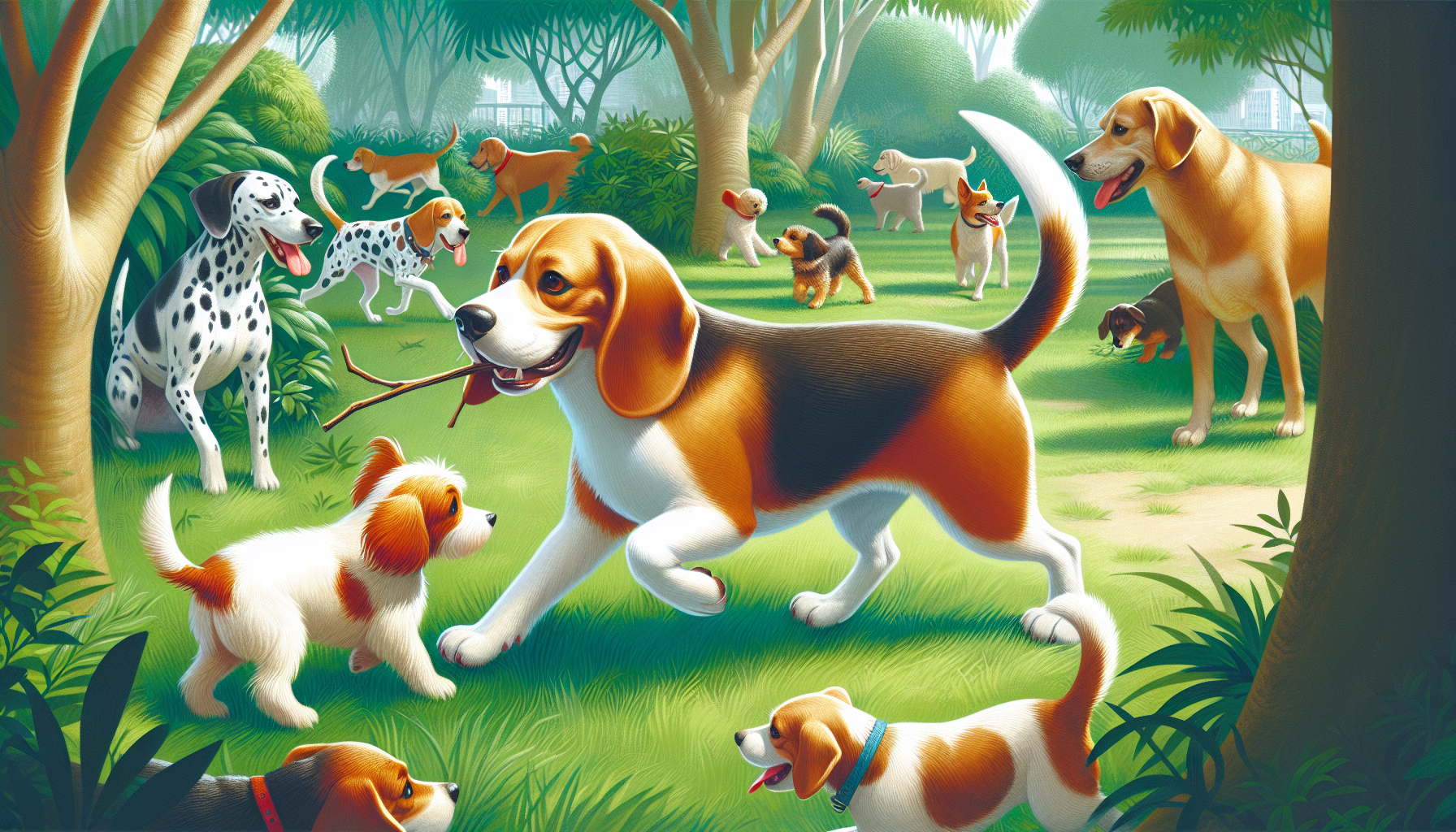
Image created using AI
The foundation of a well-balanced pet, particularly for beagles, is built on early socialization. Integrating your beagle into the family through regular interactions with people and other dogs is crucial for developing a sociable, confident adult dog. Socialization should ideally begin between the ages of eight and sixteen weeks. The first week at home is critical for gently exposing your new puppy to a diverse range of social experiences, setting the stage for healthy behavioral development.
Meeting New People
One of the joys of owning a beagle is their natural sociability, which can be enhanced by exposing them to a variety of people during their daily walks. Regular walks provide numerous opportunities for your beagle to meet individuals from diverse ages and backgrounds, fostering a well-rounded social temperament. This exposure is crucial in preventing the development of fears or biases and encourages your beagle to approach new experiences with curiosity rather than apprehension, contributing significantly to their social education.
Playdates with Other Dogs
Arranging playdates with other dogs is vital for teaching your beagle puppy proper canine etiquette and communication. These social gatherings allow your beagle to develop a friendly demeanor and help curb undesirable behaviors through positive interactions with compatible playmates. When setting up playdates, it's important to consider the size, breed, and temperament of the other dogs to ensure a harmonious match. Choose secure environments where the puppies can safely play under your watchful eye, and always closely supervise these interactions, being ready to step in if you observe any signs of discomfort or potential conflict among the participants.
Exposure to Different Environments
Acquainting your beagle with varied environments is as crucial as playdates and meeting new people for their socialization. Exposing your beagle puppy to new places and experiences helps them grow into well-adjusted adults who adapt to changes with ease. Socialization exercises such as car rides, exposure to novel sounds, and exploring different walking paths not only challenge your beagle mentally but also make walks more engaging. This variety can help sharpen their focus on your commands and enhance their overall behavior.
Advanced Obedience Training: Beyond the Basics
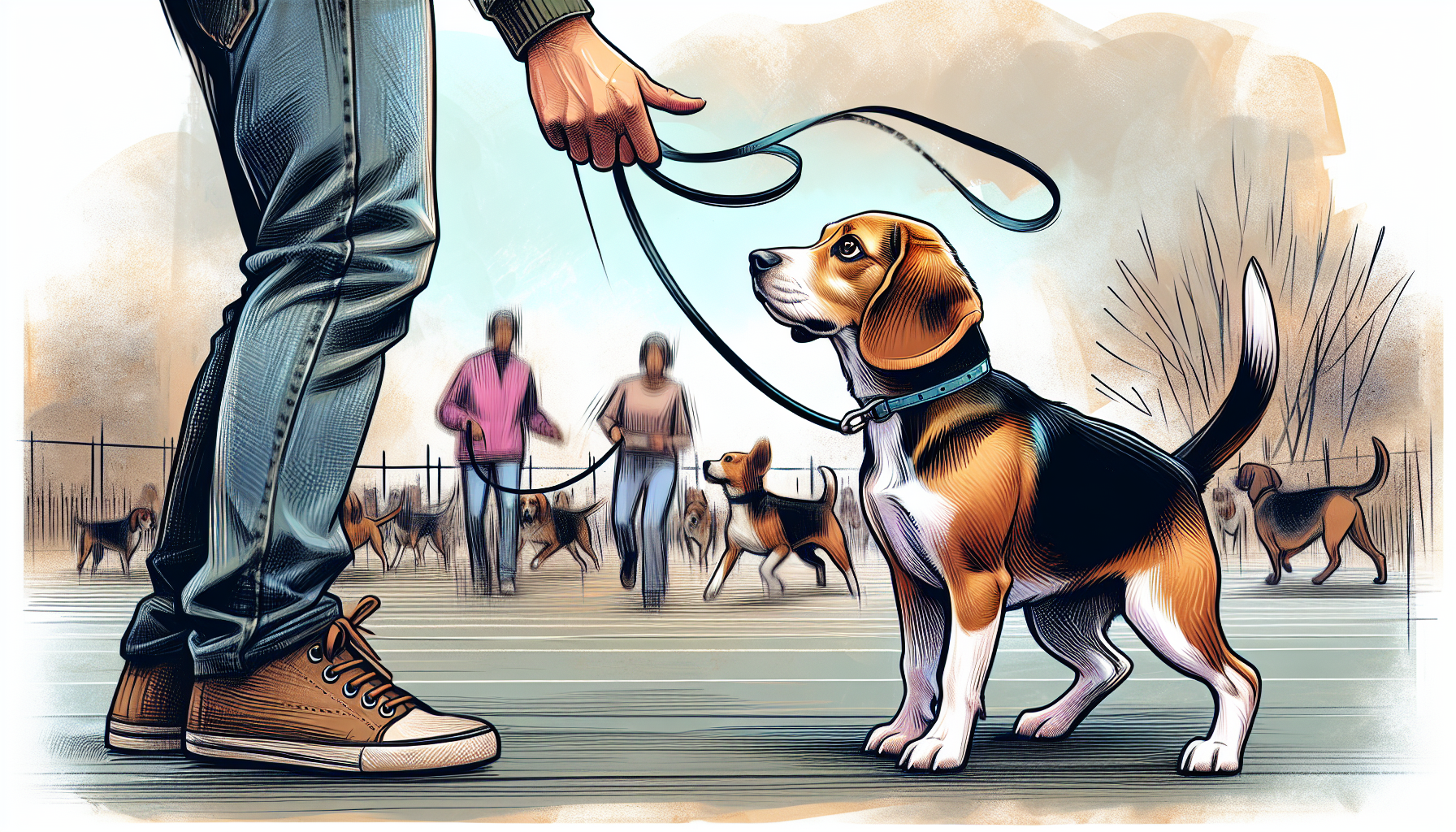
Image created using AI
Once your beagle has mastered the beagle basic commands, it’s time to move on to advanced beagle training. This level of obedience training not only refines their behavior but also provides essential mental stimulation, keeping their sharp minds engaged. Training your beagle puppy with these advanced techniques will ensure a well-rounded and obedient companion.
The progression from simple commands in the ‘Preschool’ module to more complex cognitive challenges in the ‘Einstein’ module of the “Brain Training For Dogs” program illustrates how advanced training classes evolve to meet the needs of your growing beagle, including house training.
Learning Heel and Leash Manners
Teaching your beagle to heel and maintain proper leash manners is like orchestrating a dance where both of you move in sync. Here’s how to effectively train your beagle:
- Begin indoors without a leash to minimize distractions, making it easier for your beagle to focus on your commands.
- Use high-value treats to motivate your beagle to stay calmly by your side as you walk.
- Once they understand the basics, move to a quiet outdoor area and introduce the leash.
- Use vocal cues and gentle leash corrections to further refine their ability to heel.
By consistently following these steps, you'll train your beagle to walk nicely on a leash, enhancing both your outdoor experiences.
Addressing Excessive Barking
To manage excessive barking, it's crucial to understand why your beagle feels the need to vocalize so much. Teaching them to respond to a ‘quiet' command is a highly effective strategy. Start by introducing this command during calm moments when your beagle is naturally quiet. Gradually, begin practicing the command in situations that typically trigger their barking.
Consistently use positive reinforcement to reward your beagle when they comply with the ‘quiet' command. This approach teaches them that remaining silent can be just as rewarding as barking, helping them learn to control their impulses.
Overcoming Distraction Challenges
Beagles are naturally curious and their keen sense of smell often leads to distractions. To help them maintain focus, train in environments where you can control distractions. Reward their attention with treats and consistently practice cues.
For example, use DIY interactive treat games to train your beagle to focus on you. These games not only aid in improving their concentration but also strengthen your bond. With time and consistent training, your beagle will learn to navigate a world full of distractions, confidently understanding and obeying your commands.
Brain Training For Dogs: A Digital Solution to Beagle Obedience
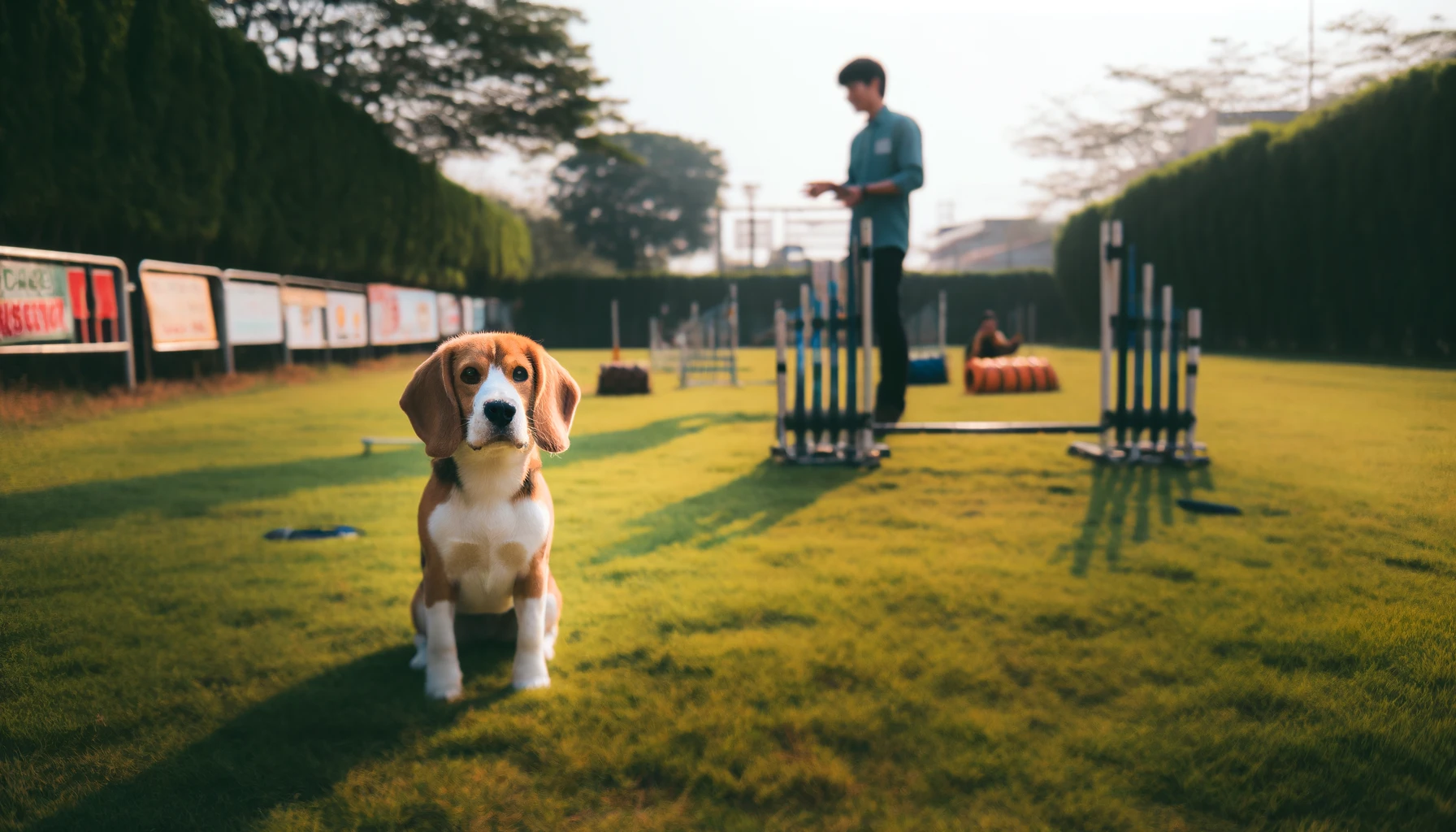
Image created using AI
As training progresses, keeping your beagle engaged is crucial for successful learning. ‘Brain Training For Dogs' provides a comprehensive digital solution to enhance beagle obedience. This program includes a variety of techniques, such as clicker training and positive reinforcement, all designed to strengthen the dog-human bond and promote learning in a positive environment.
With modules tailored for every age and stage of a beagle's life, ‘Brain Training For Dogs' is more than just a training program—it's an investment in your beagle’s ongoing learning and enrichment. This approach ensures that the training caters not only to their current needs but also supports their development throughout their entire life.
Interactive Games for Mental Stimulation
Interactive games are a key feature of the ‘Brain Training For Dogs' program, providing the mental stimulation that beagles crave. Games such as ‘treasure hunt‘ and ‘the muffin game' leverage their natural instincts and boost cognitive abilities. Additionally, activities like using a snuffle mat enhance the communication between you and your beagle.
Incorporating these engaging games keeps your beagle's mind sharp and focused, making training sessions not only more productive but also enjoyable. These activities ensure that your beagle is not only learning but also having fun during the process.
Training Modules for Every Age and Stage
The ‘Brain Training For Dogs‘ program offers pertinent and effective training modules tailored to every stage of your beagle's life. It starts with basic obedience and socialization for puppies, progressing to more complex commands and cognitive tasks for adolescents and adults. The training techniques evolve with your beagle, setting realistic goals and tracking progress at each developmental stage, ensuring that your beagle continues to grow and learn in a way that’s just right for them. This structured approach provides continuous support for your beagle's development, perfectly suited to their changing needs.
Success Stories and Testimonials
The ‘Brain Training For Dogs‘ program boasts a compelling array of success stories and testimonials from beagle owners, which highlight significant improvements in both obedience and cognitive function. These real-world examples showcase the program's effectiveness and its impact on enhancing the behaviors of beagles through structured training.
For instance, a beagle owner named Kate reported that her dog successfully overcame several behavioral problems by applying the techniques outlined in the program. These testimonials serve as powerful endorsements of the program’s ability to boost a beagle’s cognitive abilities using force-free training methods and positive reinforcement, demonstrating its practical benefits for dog owners.
Summary
Training your beagle successfully requires patience, consistency, and the right approach, but the rewards are immense. From mastering basic commands to engaging in socialization, crate, and potty training, all the way to advanced obedience techniques and the comprehensive digital resources available through ‘Brain Training For Dogs,’ the methods discussed here can help you develop a well-behaved beagle who is also a happy, mentally stimulated companion. Remember, the training journey is about more than just obedience; it's about deepening the bond between you and your beloved beagle.
Frequently Asked Questions
At what age should I start training my beagle puppy?
Start training your beagle puppy at around 7 to 8 weeks old to establish basic commands and a daily routine. This will help set a solid foundation for their training.
How do I teach my beagle to stop pulling on the leash?
Start by training your beagle indoors with treats, then transition to outdoor leash training with gentle corrections and vocal cues. It's all about consistent guidance and positive reinforcement.
Can older beagles still learn new commands?
Yes, older beagles can still learn new commands, and there are training modules designed for all life stages to ensure continuous learning and growth.
What's the best way to handle potty training accidents?
The best way to handle potty training accidents is to clean them up using an enzyme cleaner to remove odors and avoid punishment, and to reinforce positive behavior with treats after successful potty breaks.
Will the ‘Brain Training For Dogs' program help with my beagle's excessive barking?
Yes, the ‘Brain Training For Dogs' program can help manage your beagle's excessive barking by teaching a ‘quiet' command and using positive reinforcement. Give it a try!
Learn how to train your beagle to be the well-behaved dog you desire –> Access our Free Report
Shop for beagle-themed products and gifts that beagle enthusiasts will love.

